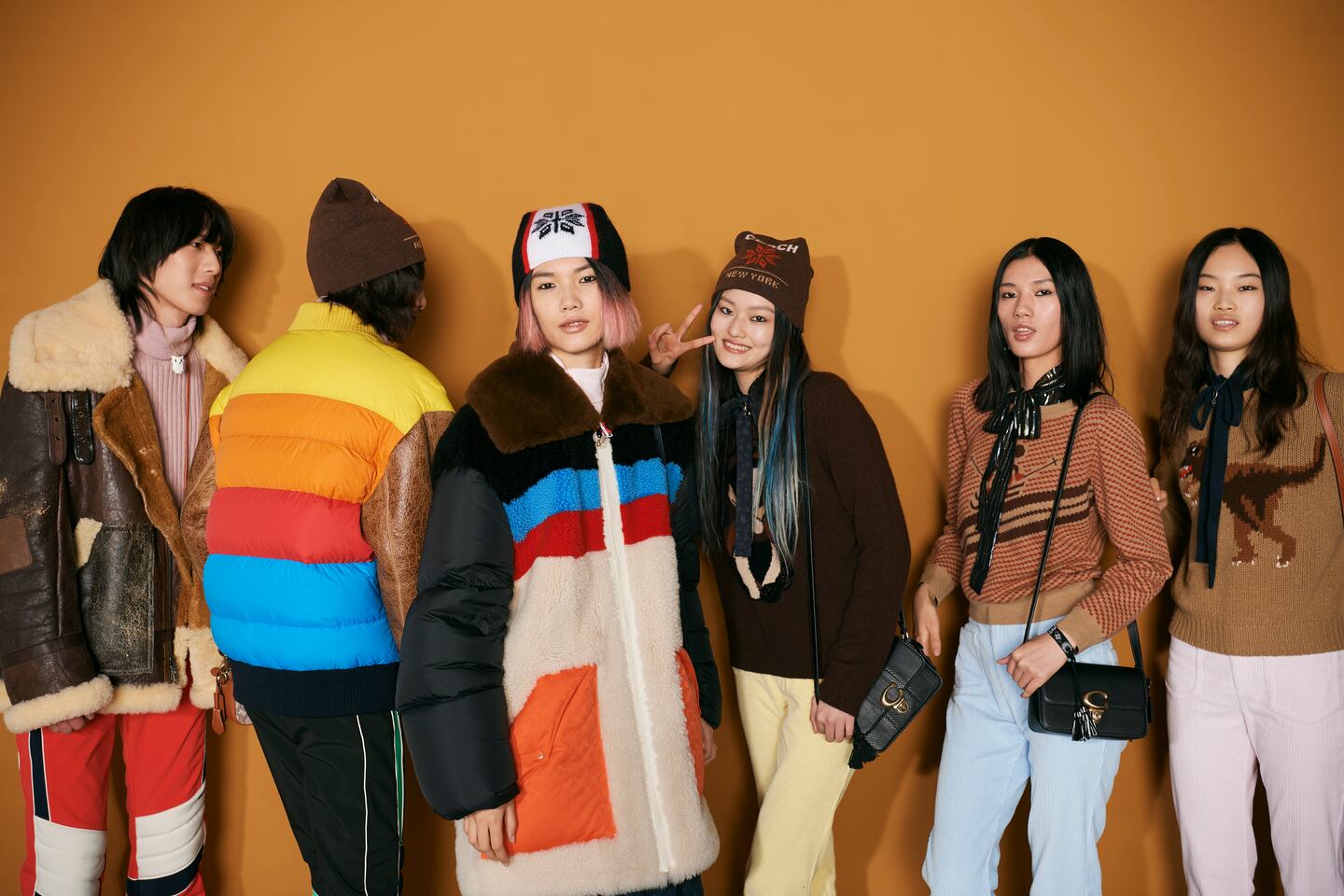
The Business of Fashion
Agenda-setting intelligence, analysis and advice for the global fashion community.

Agenda-setting intelligence, analysis and advice for the global fashion community.

The historic Shanghai Exhibition Centre was transformed into an American drive-in, complete with an array of vintage cars, which served as the setting for an in-person runway debut for Coach’s newly-renamed “Winter” collection.
Alongside the runway show, a new episode of “Coach TV” — the digital fashion concept developed by the brand last year to considerable acclaim — titled “Live in Shanghai” was released.
Creative director, Stuart Vevers, described the collection as building on Fall’s story of creature comforts, tactility and softness. The themes of re-emergence and a desire for adventure were represented by retro nylon skiwear with vintage-inspired sporty graphics, juxtaposed with lamé cocktail dresses and blouses finished with dressed up touches of lace and velvet.
“Shanghai is a city, like New York, that inspires me — with its energy, and it contemporary attitude. There is a sense of possibility you feel in Shanghai and in this moment, that feels like stepping into our future, it felt like a natural choice as the place to return to the runway and unveil my vision for winter. It was also an important opportunity to deepen and enrich our connection with our industry and clients in China,” Vevers told BoF.
ADVERTISEMENT
Following this Shanghai sojourn, September will see the brand return to the New York Fashion Week schedule to show its Spring collection.
With consumers tightening their belts in China, the battle between global fast fashion brands and local high street giants has intensified.
Investors are bracing for a steep slowdown in luxury sales when luxury companies report their first quarter results, reflecting lacklustre Chinese demand.
The French beauty giant’s two latest deals are part of a wider M&A push by global players to capture a larger slice of the China market, targeting buzzy high-end brands that offer products with distinctive Chinese elements.
Post-Covid spend by US tourists in Europe has surged past 2019 levels. Chinese travellers, by contrast, have largely favoured domestic and regional destinations like Hong Kong, Singapore and Japan.